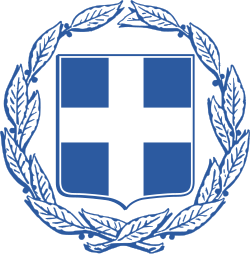Hayhurum
Hayhurum is the name given to Armenian-speaking Christians who are members of the Greek Orthodox Church. Their exact ethnicity was a source of debate. Some (not all) of these Armenian speakers, purportedly living in the vicinity of the town of Akn till the 16th century, were of Orthodox faith (instead of Armenian Apostolic Church as is the case for most Armenians). There were also a number of people of Greek Orthodox profession among Hamshenis who are considered to be converted to Greek Orthodoxy during the days of the Empire of Trebizond.
| Part of a series on |
| Armenians |
|---|
 |
| Armenian culture |
|
Architecture · Art Cuisine · Dance · Dress Literature · Music · History |
| By country or region |
|
Armenia · Artsakh See also Nagorno-Karabakh Armenian diaspora Russia · France · India United States · Iran · Georgia Azerbaijan · Argentina · Brazil Lebanon · Syria · Ukraine Poland · Canada · Australia Turkey · Greece · Cyprus Egypt · Singapore · Bangladesh |
| Subgroups |
| Hamshenis · Cherkesogai · Armeno-Tats · Lom people · Hayhurum |
| Religion |
|
Armenian Apostolic · Armenian Catholic Evangelical · Brotherhood · |
| Languages and dialects |
| Armenian: Eastern · Western |
| Persecution |
|
Genocide · Hamidian massacres Adana massacre · Anti-Armenianism Hidden Armenians |
Greek Orthodox in faith and Armenian in language, they were called Hayhurums (Hay meaning Armenian, hu meaning in Armenian and and Rûm meaning Roman or, as it is now termed, Byzantine, denoting the Greek Orthodox church of the Byzantine (Eastern Roman) Empire). Greek sources claimed that they were former Greek colonists who had settled in Akn, adopting the Armenian culture and heritage which dominated the region, while Armenian sources objected this claim. The latter is considered apt by most western scholars who have studied the group.
It is believed that the vast majority of Hayhurum peoples were Armenians by ethnicity and had converted to Greek Orthodoxy during the Byzantine era. Hellenization was not an uncommon practice among Cappadocian and Anatolian Armenian populations who vied for favorable treatment during the 12th century when ethnically Greek royal families consolidated the throne of Byzantium, after centuries of Hellenized-Armenian rule. Many of the greatest Byzantine scholars, generals, clerics and emperors were in fact of Armenian heritage, and had adopted the Greek Orthodox faith out of necessity, (as in the case of emperors who had to be of the Greek Orthodox Faith) or out of cosmopolitanism.
Hayhurum had a significant presence in Adapazarı where there had been an Armenian community since 1608. They have been included in the 1923 agreement for Exchange of Greek and Turkish Populations between Turkey and Greece, and settled in various parts of Greece. Precious objects of culture and else belonging to this small community is being displayed today in Athens Benaki Museum.
In the region of Agn by the 20th century Hayhurums were essentially concentrated in 5 villages: Vag, Zorak, Musaga, Sirzu, Hogus. In the region of Dersim near Çemişgezek they were found in the village of Memsa, near Pertak in the village of hromkéğ, In the region of Ilic the village of Atma was named as a Hayhorom village in 1582 but was a Kurdish village by the 20th century. In the region of Kharberd the village of Haydi. and near Erzincan in the village of Dzatkéğ[1][2]
In the medieval era there were more Hayhurum villages throughout the Kemaliye, Dersim, Erzincan region but due to Islamization, depopulation from the Perso-Ottoman wars, and migration to western Anatolia, their numbers shrank.
